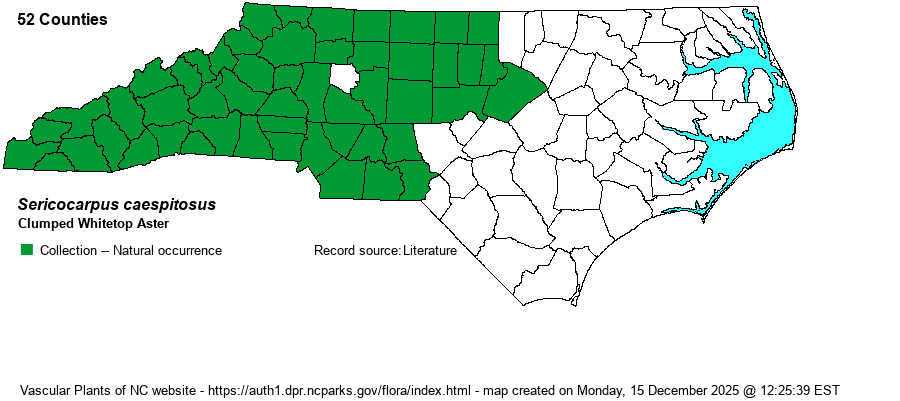| Author | Nesom | |
| Distribution | Nesom (2021) published a paper in Phytoneuron that split S. asteroides, with S. caespitosus now being a part of that former species. Occurs throughout the Mountains and Piedmont. Likely does not occur in the Coastal Plain. However, nary a single herbarium reporting to SERNEC has re-configured its S. asteroides collections to determine which are S. caespitosus. However, Nesom did provide a color county map for the two species in his paper. A few counties in the eastern Piedmont are a bit speculative as to which taxon is present.
"C. and w. NY south to se. PA, c. MD, c. NC, SC, c. and sw. GA, w. FL Panhandle, s. AL, and MS, primarily in the Piedmont and provinces west of that" (Weakley 2022). | |
| Abundance | Numerous and reasonably common across the Mountains and Piedmont. | |
| Habitat | Dry woods, wooded margins, including thin soil around rock outcrops. |
| Phenology | Mainly blooms from May to July, and fruits shortly afterwards. | |
| Identification | See the S. asteroides account. However, S. caespitosus is a "Plant only with a short, thick, fibrous-rooted rhizome that produces short basal offsets; plants in scattered populations of cespitose individuals" (Weakley 2022). The nominate species -- asteroides -- now is the one with a clonal growth, of many interconnected plants. | |
| Taxonomic Comments | See above. The former S. asteroides has been split in two, with A. caespitosus the more northerly species that has a clumped, non-clonal growth form.
| |
| Other Common Name(s) | None | |
| State Rank | [S5?] | |
| Global Rank | GNR | |
| State Status | | |
| US Status | | |
| USACE-agcp | | |
| USACE-emp | | |

